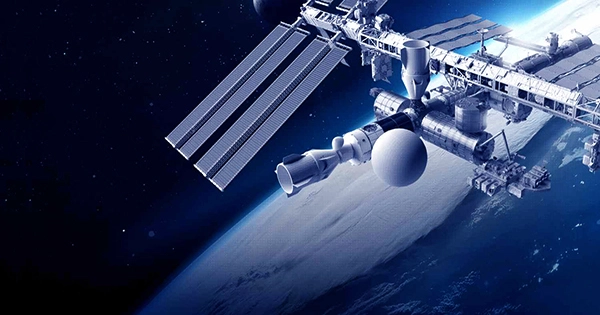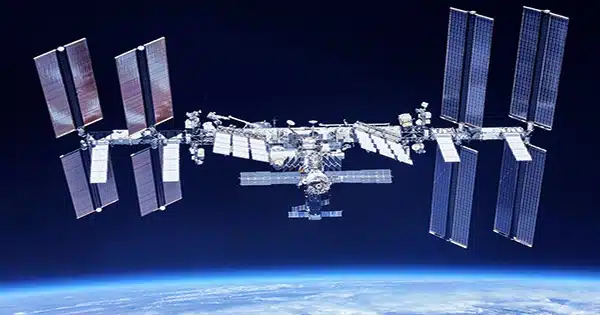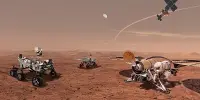The lifespan of the International Space Station (ISS) is about to expire. Plans for successor space stations that will continue the ISS’ legacy are already in place, even though NASA and its partners have committed to keeping it in operation until 2030.
With Tiangong, China intends to take the lead, while the India Space Research Organization (ISRO) intends to launch its own space station by the middle of the decade. In addition, NASA has agreements with Blue Origin’s Orbital Reef, the Axiom Space Station (AxS), and Starlab to develop commercial space stations.
So fasten your seatbelt! The multinational European aircraft behemoth Airbus has entered the race!
The business revealed their idea for a Multi-Purpose Orbital Module (MPOP) named the Airbus LOOP in a newly published video. This modular space segment has three decks, a centrifuge, and enough room for a four-person crew, making it suitable for future space stations and long-duration Mars expeditions.
The LOOP leverages on the company’s extensive experience with human spaceflight missions like as the ISS Columbus Module, the Automated Transfer Vehicle (ATV), and the Orion European Service Module (ESM).
The interior design has three levels (or decks), as you can see in the video below. These consist of a Habitation Deck, a Science Deck, and a Centrifuge that can simulate gravity for two crew members at once (from top to bottom).

The module has an approximate diameter and length of 8 meters (26 feet) and a capacity of around 100 cubic meters (3500 cubic feet).
The crew may go to the deck that offers the most protection in the case of a solar flare or other risks according to the “internal safe harbor concept,” according to Airbus, which is made possible by dividing the interior into several decks.
Each deck is accessed by a central “Tunnel” that is encircled by a greenhouse structure that may contain plant experiments and offer a consistent supply of extra greens, legumes, and other plants (similar to greenhouses on board the ISS).
According to reports, the module can (temporarily) hold up to eight astronauts at once despite being intended for a crew of four.
The mechanical framework can be utilized by itself (a “dry module”) or the deck selection can be customized to meet the needs and goals of each mission.
Depending on the needs of the operation, certain decks may be outfitted with infrastructure and machinery tailored to the purpose.
The Habitation Deck is essentially a “common area” in the conventional form, complete with big windows and stationary bikes for exercise.
The Science Deck has many computer terminals, an airlock that allows the crew to do extra-vehicular activities (EVAs), and smaller portholes that give views of space.
The Centrifuge, which comprises of two crew pods and two weights, is the part of the LOOP that is possibly the most intriguing. These pods include exercise cycles and can fit one crew member, allowing the crew to exercise (two at once) in a gravity-free environment.
According to Airbus, this three-deck layout accommodates all fundamental requirements for extended stays in space and makes the LOOP compatible with all crew and cargo vehicles, including existing and future ones. This includes the International Space Station (ISS), where the LOOP would be installed to offer more volume and perhaps even “gravity therapy.”
It might possibly be included into the Lunar Gateway or serve as the dwelling module for the projected Deep Space Transport (DST).
Airbus also underlines that additional LOOP modules may be joined to form a full-fledged space station, with each deck supplied with different decks to allow a variety of operations and experiments. In this regard, the LOOP might serve a similar purpose as NASA’s planned Non-Atmospheric Universal Transport Intended for Long-Term United States Exploration (Nautilus-X) idea.
Although there is no indication of how much gravity the Centrifuge will be able to simulate, some calculations using SpinCalc and SpaceCalc provided some estimates.
According to both applications, the Centrifuge would need an angular velocity of 3.86 meters per second (12.66 feet per second) and 9.2 revolutions per minute to imitate Martian gravity – 3.72 meters per second2, or around 38% of Earth’s. It may be spun down to 2.55 meters per second (8.35 feet per second), with 6 revolutions per minute, to imitate lunar gravity (around 16.5 percent).
This would be especially important for Mars missions since it would help alleviate the physiological impacts of microgravity while also acclimating the crew to what they would encounter on the surface. More information, including radiation shielding, materials, and weight estimates, should be available soon.
Needless to say, NASA and other space organizations have substantial hurdles in terms of future space missions and operations. These include resuming lunar exploration and development, sending the first crewed missions to Mars, and determining what to do after the ISS is decommissioned.
NASA, as usual, has relied on the private space industry to deliver inventive answers to these difficulties, and they are doing so!
















